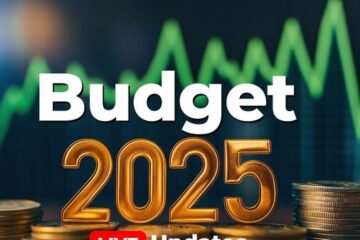
India does not have a system of education,” proclaimed Prof. Krishna Kumar in his recent talk on “Teaching the Indian Constitution” at a conference in Kolkata. “We have a system of examinations — not education,” he clarified to an audience, which nodded and hummed in total agreement. He then lamented the complete dependence of teachers on textbooks. Teachers, he had observed, perceived that teaching meant explaining the text. The teachers in the audience protested, saying that the textbooks were so content-heavy that there was no scope for anything else in the classroom. The questions that were usually set in the board exams were factual and the teachers had to prepare students accordingly, so that they could get the all-important examination scores on which hinged their reputation as competent teachers.
After this telling introduction, the professor proceeded to share a classroom strategy that he had adopted to teach the Indian Constitution to young teacher trainees in the B.El.Ed. course. He said that he was aware that all school students were taught the framework and making of the Indian Constitution, as it was included in their civics syllabus, but nobody quite knew exactly what the “drafting” of a constitution entailed. So he decided to try out a sample of experiential learning by getting his students to draft a hypothetical will which would accommodate the interests of every family member while meeting the conditions laid down by the testator. The trainees learnt firsthand, how differences, discussions and debates are the prerequisites to the drafting of any document that affected a large number of people.
It was clearly demonstrated that this was the way students understand, learn and are ultimately educated — not by cramming facts and recalling them during an examination. Prof. Kumar reminded the audience of the late Prof. Yash Pal’s words. He had said we needed to develop in our young, an “addiction to understanding”. Understanding will certainly not be attained through our examination-oriented system. Therein lies the vacuum that stares at educators and is eyed by business entrepreneurs.
Many resourceful young people feel the need to enhance and enrich the education that is being dished out in schools. They have created products and services which are truly commendable. However, there are many who having smelt the opportunity to make a lot of money, and try to capture the education market with gimmicky marketing strategies. Many institutions fall for these ploys, but happily pass on the costs to parents who will invest any amount to ensure a bright future for their offspring. The “education business” is thriving because the education vacuum is real. Also, it must be remembered that as in healthcare, there is no recession in education. Hence, there are multiple business enterprises which jostle each other to enter the education field and fill the vacuum.
To take it chronologically — there are educational toys and games for the very young while for older students “fruitful educational experiences” that a regular school does not give, are on offer. There are packages to teach reasoning and logic, online programmes for middle-school students to improve mathematical skills and others to develop an interest in science. Now there is a proliferation of robotics courses. Programmes to develop critical, imaginative and creative thinking and communication skills have existed for some years. Mention must be made of educational excursions, in the course of which children can “immerse themselves in a special experience” while travelling, whether in India or overseas. “We are offering the opportunity to include immersive and experiential global perspective learning in your classrooms,” says one such organisation.
It has been widely noticed that a combination of IIT and IIM talent always enhances the value of an educational product in the eyes of a potential customer. “Discover the genius within your child”, says the brochure of a company which is run by IIT-IIM alumni. Another company promises to teach kindergarten students lateral thinking, creativity and problem-solving, thereby developing “critical skill-sets”. There are assessment tools created by companies who know that forward-looking schools and discerning parents are interested in knowing how their students and offspring stand academically in the global scenario. They know well that the board examination results neither indicate a student’s cerebral powers nor his or her ability to pursue higher studies in reputed universities across the world. Since teachers usually set questions following the board “pattern”, schools engage the services of educational firms that not only customise test papers for different levels but also give proper feedback to the teachers in the form of pie-charts and graphs to indicate the understanding of each student of every topic and sub topic. The intention is to guide teachers as well as students through the entire syllabus without leaving any gaps in the teaching-learning process.
With all this expert external help, one would have thought that the students are actually “learning to learn”. But alas, the vacuum is still not filled completely. Indeed, students are learning to answer intelligently framed questions (in addition to the ones that demand simple recall), but they are not motivated to ask probing questions. In other words, their intellectual curiosity is not being aroused through these tools. They are merely being helped to engage with the material more actively and thus understanding it better. However, even this advantage is soon lost, once they enter the last phase of their school life — the secondary and higher secondary stages — in the course of which students are required to take two board exams. These last four years of school are devoted not only to preparing for the Class 10 and 12 “boards” but also the all-India competitive exams to get admission in different professional schools — of medicine, engineering, architecture, law and design. Consequently, meaningful exploration and genuine learning come to a grinding halt.
Thus, despite the attempts of resourceful entrepreneurs, it appears that until we replace our current examination system with a proper education system, the education vacuum is here to stay.
[“source=asianage”]

